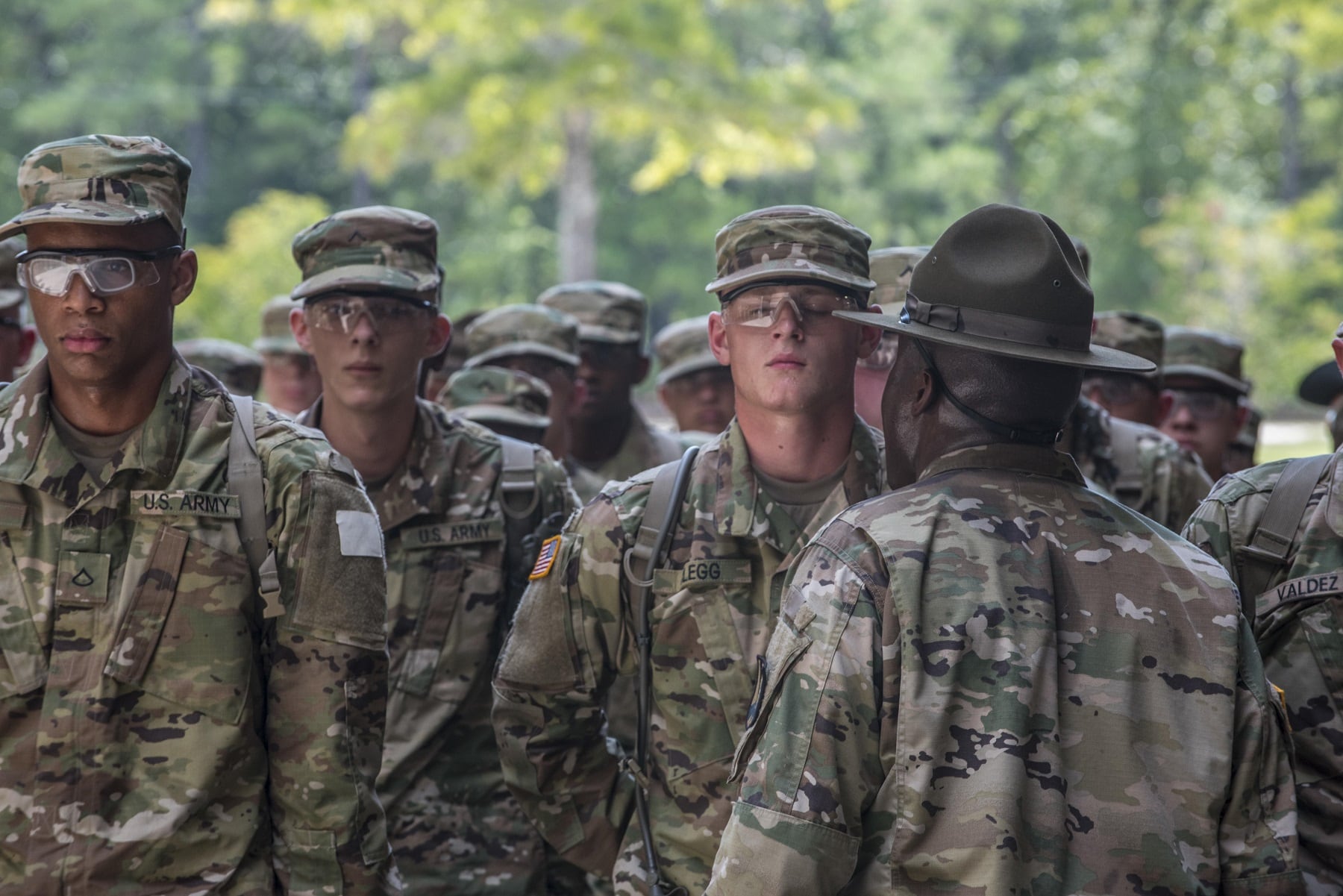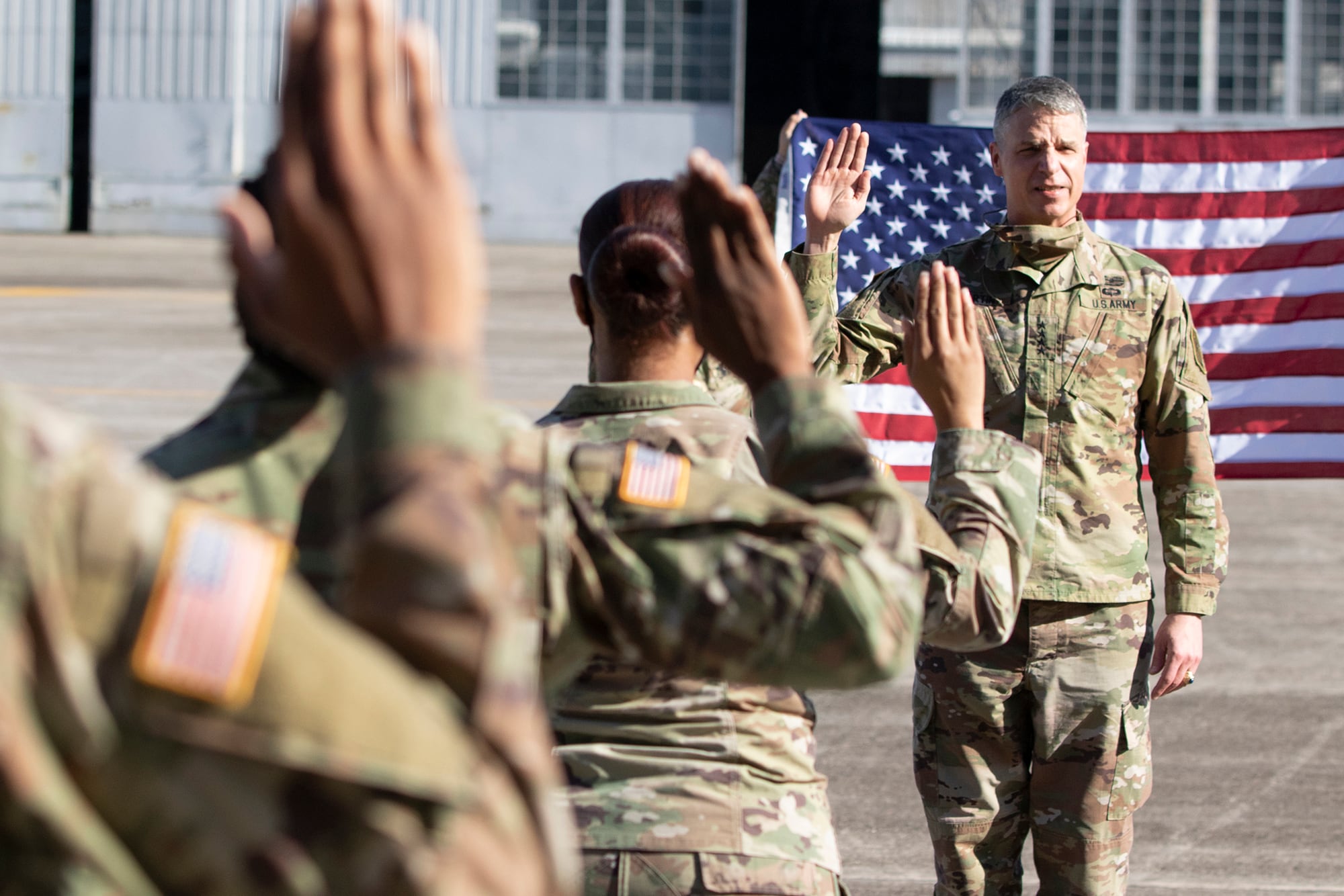The Army’s two largest components — the active-duty force and the Army National Guard — successfully exceeded their end strength goals for fiscal 2021, service officials said in a Wednesday news release.
The Regular Army had 486,490 troops as of Sept. 31, which beat its goal of 485,900. The Army National Guard did the same, with 337,525 troops against a target of 336,500.
The Army Reserve fell thousands short of its goal, though. The service’s smallest component had only 184,358 troops — significantly less than its target strength of 189,900.
In the release, senior Army officials credited the active-duty force’s success to high retention rates and decreased attrition in basic combat training. Maintaining end strength is a matter of balancing recruiting and retention with attrition, the release explained.
“This year the Army also exceeded its retention goal by 1,852 Soldiers,” said Sgt. Maj. Mark Clark, the Army’s senior enlisted advisor for personnel. “Overall, the Army retained 58,141 Soldiers who were scheduled to transition and an additional 6,618 Soldiers elected to transition into the Army Reserve or Army National Guard.”
Lt. Gen. Gary Brito, the Army’s deputy chief of staff for personnel, pointed to ongoing efforts to improve talent management and quality of life across the Army as one engine of the service’s success.
RELATED

“The Army is a learning organization that evolves constantly to adapt to the changing environment, and that includes how we fight for and retain talented Soldiers,” Brito said. “The emphasis from our leaders at all echelons to meet the needs of our people and care for our Soldiers and our families has made the Army a competitive organization for more people — talented people — to join our team.”
Changes to BCT also reduced attrition and ensured that more new recruits make it into the force, according to the release.
The ten-week program had to adjust to include a two-week precautionary quarantine period at the beginning of the COVID-19 pandemic, leading the Army to shift certain training modules like sexual assault and harassment prevention to those first two weeks.
The change has stuck, even as the COVID-19 vaccines permit the Army’s entry training to return to normal operations, because it offers a more eased entry into Army life that helps recruits adjust better to the training program.
The service has also “improved the ratio of drill instructors to trainees during basic training,” the release added.
Training and Doctrine Command’s commander, Gen. Paul Funk, who oversees basic training, explained the rationale for the moves in an Oct. 11 press conference.
“They come to us with 18 years in whatever environment they come from,” Funk said. “By inculcating them early and often with the [sexual assault and harassment prevention] mindset, and our values...we’re going to change the culture.”
Because of the recent changes, the attrition rate during BCT has reduced from 10.8 percent in fiscal 2020 to 5.5 percent in fiscal 2021.
“This serves to educate new recruits on the conduct and professionalism expected within the organization at the very beginning of their basic training rather than near the end,” the release explained.
The service may face an uphill battle to hit its end strength goals in fiscal 2022, though.
Army leadership plans to involuntarily discharge troops who refuse the COVID-19 vaccine, and it has decreased its number of recruiters in an effort to keep more staff sergeants with their units, according to Sergeant Major of the Army Michael Grinston.
Davis Winkie covers the Army for Military Times. He studied history at Vanderbilt and UNC-Chapel Hill, and served five years in the Army Guard. His investigations earned the Society of Professional Journalists' 2023 Sunshine Award and consecutive Military Reporters and Editors honors, among others. Davis was also a 2022 Livingston Awards finalist.





